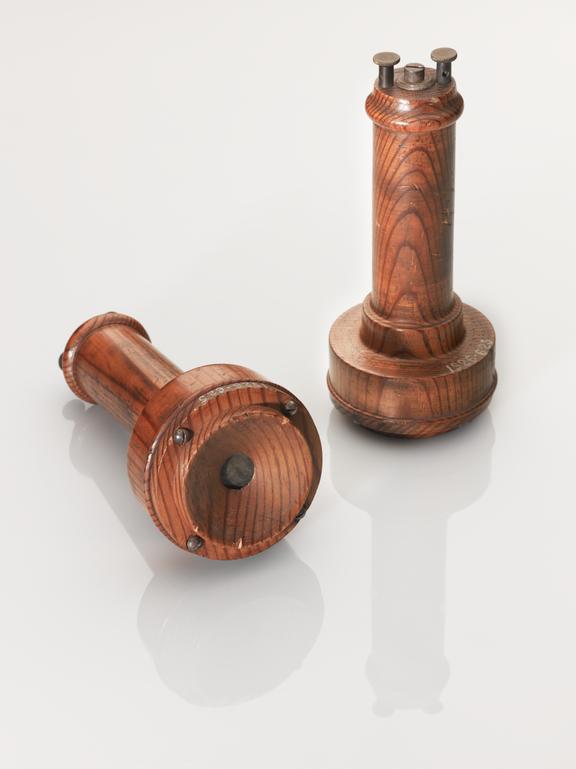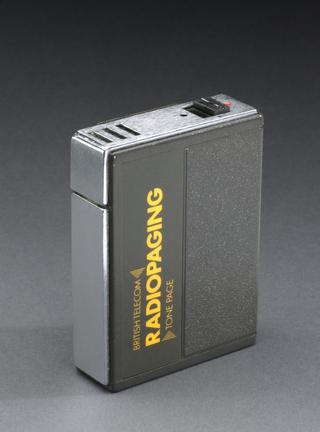
Telephone receivers with wooden handles, 1877-1902
- Made:
- 1877-1902 in unknown place

Two early 'butterstamp' telephone receivers with wooden handles and square diaphragms, believed to have been the property of Dr Alexander Graham Bell, unknown maker, 1877-1902.
These are 'butterstamp' receivers, so called because they resembled the stamp used to make small pats of butter. They used a permanent magnet held inside a wooden handle, rather than electro-magnets which had been used before. Each functioned as both a receiver and a transmitter. Early telephone models had a single receiver/transmitter, but this was confusing for users, as well as impractical as the device had to be constantly moved between the mouth and ear. Later telephone models had two devices, each of which could be used as a receiver or a transmitter. The butterstamp receiver remained the standard receiver until 1902, when it was replaced by a more efficient deign that used two magnets.
Details
- Category:
- Telecommunications
- Object Number:
- 1926-625
- Materials:
- pine (wood), copper (alloy) and steel (metal)
- Measurements:
-
overall (each): 155 mm x 69 mm diameter, .2 kg
- type:
- telephone component
- credit:
- Donated by E Harris




